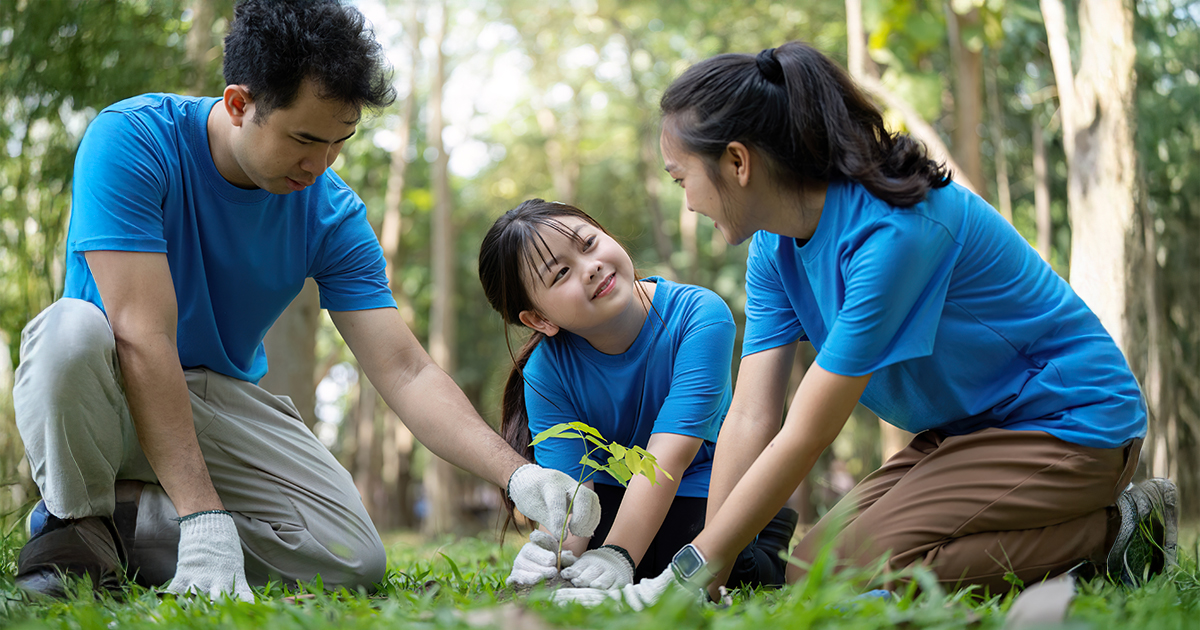Hyundai Motorstudio Senayan Park
Hyundai Motorstudio Senayan Park
Newsroom
The official news from Hyundai Motorstudio Senayan Park and a collection of innovative articles on mobility and sustainability here.
-
Benefits of Green Open Space for Children's Health and Development
- Hyundai Motorstudio Senayan Park Senayan Park 2025.10.08
-
Imagine a place where children can play freely, breathe fresh air, and learn about nature firsthand. Green open spaces are such places. In the midst of busy and polluted city life, green spaces are becoming a very important oasis for the health and development of our children.
Green open spaces are not just a garden or yard. It is a space that gives children the opportunity to move, interact, and learn in a natural and fun way. In this article, we will discuss the various benefits of green space for children, how green space affects their development, how to create green space at home and school, and educational activities that can be done there.
The Role of Green Open Spaces for Children's Health
The fresh air and natural environment that exist in green open spaces are very good for children's health. Playing in the park or garden helps children get clean oxygen intake, away from the air pollution commonly found indoors or on the highway.
In addition, exposure to sunlight in the morning helps the child's body produce vitamin D, which is essential for the growth of bones and the immune system. Physical activities such as running, jumping, and climbing trees also strengthen a child's muscles and motor coordination.
More than that, green spaces can have a calming effect, reducing stress and anxiety in children. The sounds of nature, such as the chirping of birds and the rustling of leaves, as well as soothing green scenery, help children feel more relaxed and happy.
The Influence of Green Open Space on Child Development
Green open spaces also have a great influence on children's mental and social development. When playing in nature, children get rich sensory stimulation—they feel the texture of the soil, hear the sounds of insects, see the colors of flowers, and smell the scent of plants. All of this helps their senses and brain development.
In the green space, children learn to interact with peers, share toys, and cooperate in games. They also develop imagination and creativity when exploring the surrounding environment.
In addition, green spaces become an effective open classroom. Children can learn about the life cycle of plants, the importance of protecting the environment, and biodiversity in a hands-on and fun way.
How to Create Green Space at Home and School
Creating green space does not have to require a large amount of land. You can get started with these simple steps:
At Home
- Take advantage of yards, balconies, or windowsills to grow houseplants, vegetables, or herbs.
- Use recycled pots or containers such as plastic bottles and used cans as planting medium.
- Involve children in choosing and caring for plants so that they feel owned and responsible.
In School
- Create a mini garden in the school yard or provide plant pots in class.
- Schedule gardening activities as part of lessons or extracurriculars.
- Invite students to take care of and observe plants regularly.
In the Neighborhood
- Encourage the establishment of community parks that can be used as children's play and learning spaces.
- Participate in environmental greening programs with local residents.
Environmental Benefits of Green Open Space
Green spaces help maintain the balance of nature. Plants absorb carbon dioxide and produce oxygen, helping to reduce air pollution. In addition, plants also absorb rainwater, which reduces the risk of flooding and soil erosion.
The existence of green spaces also provides habitat for various animals and insects that are important for biodiversity. In cities, green spaces help lower the air temperature, creating a cooler and more comfortable environment.
Educational Activities in Green Open Space
Green spaces are a fun and effective place to learn for children. Some of the activities that can be done include:
- Observe plants, insects, and birds to foster curiosity and love of nature.
- Simple gardening, planting and caring for plants with children.
- Educational games use natural materials, such as making artwork from leaves and twigs.
- Environmental clean-up activities to instill a sense of responsibility and care.
Green open spaces are essential for children's health and development. By creating and utilizing green spaces at home, school, and the surrounding environment, we help children grow up healthy, creative, and environmentally friendly.
In addition, green space also plays a big role in maintaining environmental quality and ecosystem balance. Let's build a green environment together for a better future and a healthier earth.




